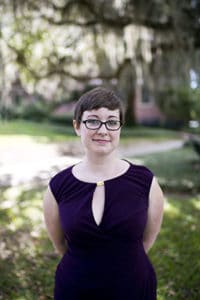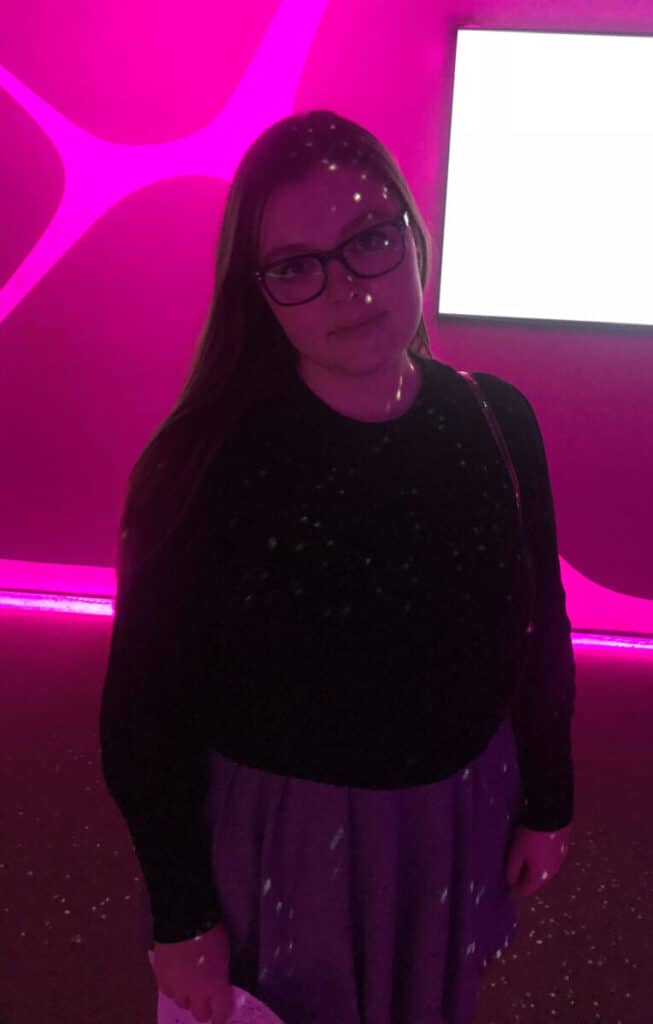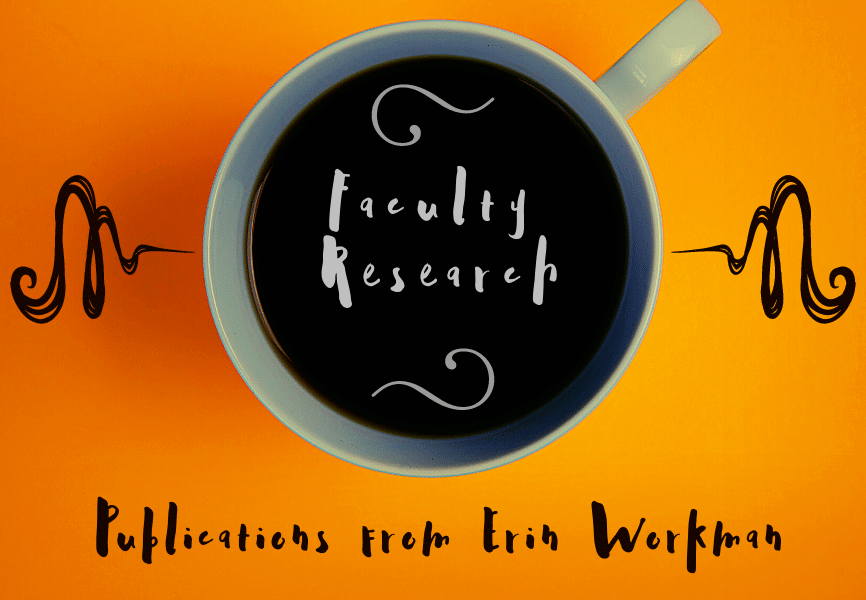The world of academic scholarship and research publication never slows, especially for Dr. Erin Workman, who has seen the publications of two articles and a book chapter throughout the year. Being the director of the First-Year Writing Program, the natural theme uniting Erin’s work is writing pedagogy, stretching from program policy to teaching philosophies and strategies.
Alongside Kathleen Yancy, Joe Cirio, and Jeff Naftzinger, Erin in the article “Notebooks, Annotations, & Tweets” investigates everyday writing such as the common acts of jotting down notes in a book, chalking graffiti on a sidewalk, or simply tweeting. Mainly, she and her co-authors concern themselves with everyday writing as a “phenomenon” and “subject worthy of study,” and pushes a “heuristic to use for analyzing individual instances” of these objects.
Found as a chapter in Approaches to Lifespan Writing Research and more into the ever-evolving field of the classroom, “Visualizing Writing Development” presents the case for creating concepts maps that may track a writer’s development through the classroom and potentially beyond. Simply called visual mapping, this strategy helps instructors and others to understand a writer’s conceptual knowledge, a function that could be used to historically follow a writer through their lifetime.
The latest piece, published as “Drafting Pandemic Policy” with Peter Vandenberg and Madeline Crozier, reports an ethnographic study of writing departments within the early days of COVID. It finds that there was an acceleration of sorts with the communication infrastructure for departments – more emails, more calls, more deliberate work – that rose out of the sudden shift from workplace to online, a spike that consequently “led to heightened stress levels.”
With all of this work, we caught up with Erin to ask her questions and gain more insight into the themes of these pieces and, appropriate to her research, the writing processes that she went through with them.
These publications seem consistently interested in people performing the act of writing, whether they be students, teaching faculty, or ordinary annotators. In your position in FYW, how do you approach this?

My disciplinary training in composition-rhetoric functions as a terministic screen for all aspects of my life including, but not limited to, the academic. I’m wildly curious about writing in all its forms and deeply invested in the study of writing development through the lifespan. My teaching and administrative work both inform and are informed by my research on writing and writers’ ongoing development of conceptual writing knowledge. Most visibly, this body of work informs my approach to (re)designing the FYW curriculum and courses, engaging FYW instructors in faculty development, and assessing student learning outcomes.
In “Visualizing Writing Development,” you state that “researching conceptions of writing is methodologically challenging.” Could you elaborate?
What I go on to say is that a writer’s conception of writing is often tacit, operating at the unconscious level but, nonetheless, shaping what, how, and why a writer writes. Not directly observable or measurable, conceptual knowledge proves to be a tricky research subject, relying as it does upon a writer’s deliberate reflection and articulation. In other words, I can only know as much as a writer tells me, and what the writer tells me is constrained by both what they can remember and what they can name. Without a writing vocabulary, writers often struggle to “name what they know,” and bridging that gap has proven to be especially difficult.
Temporality seems to be a prevalent theme in these works, whether it being tracing conceptions of writing over time or revealing sudden shifts in writing environments. Is time and space a consistent concern or interest to you when it comes to writing?
Absolutely! What comes to mind for me immediately is Paul Prior and Jody Shipka’s research on writers’ literate activities across time and space. Drawing on Bakhtin, Prior and Shipka offer the conceptual frame of chronotopic lamination to get at the complexity of literate activity as it unfolds in space-time, and they observe writers engaged in what they call environment-selecting and -structing practices, illustrated most memorably by a participant who recounted setting up a card table in her living room to restrict her bodily movement until she completed a writing task.
The turn-around for “Drafting Pandemic Policy” must’ve been quick. Do you have any comments on the shift? What was the original intent?

It was incredibly quick! This publication was very much the result of serendipity. Since March 2018, I had been collaborating with my fantastic research team—Pete Vandenberg and Maddy Crozier—on a multi-stage institutional ethnography of writing at DePaul, and we were just beginning our third stage in March 2020 when the pandemic hit. Though we didn’t fully appreciate the effects of remote work on our research methods at first, Pete and I soon came to recognize the affordances of this new working environment for jointly conducting interviews with administrations and staff across the university. We were surprised by stakeholders’ uptake of our recruitment materials and deeply appreciative of the time they spent with us on Zoom talking about writing.
We had just begun interviewing when the CFP for the special issue came out on the WPA Listserv, and we were struck by its resonance with conversations about policy that were emerging in those early interviews. We quickly put together a proposal and received an acceptance the following day. After amending our IRB protocol to include a few more interview questions about policy, we continued conducting interviews and meeting regularly with Maddy, who was interviewing students, to analyze the rich data that was pouring in with each call. The piece came together within two weeks, and after receiving helpful feedback from reviewers two weeks later, we submitted a revised piece that was accepted and off for copy-editing.
Our larger project is ongoing: we have one manuscript under review for an edited collection and a second in the works, and we’ll be joined by our newest team member—Deyana Atanasova, a senior minoring in professional writing—in sharing our findings at the 2021 Conference on College Composition and Communication.
It’s mentioned multiple times in the same article that there was an acceleration and sudden increase in writing and communication at the start of the pandemic. From your point of view, has this stabilized or is the acceleration still ongoing?
Though I can’t say this with certainty, I think that we have reached a point of relative stability. Months out from this seismic shift in working, teaching, and learning, many of us have fallen into—or intentionally established—routines, habits, and processes that regulate our experience of time. The types of institutional policies and procedures that were being rapidly developed in a moment of crisis have firmed up, lessening the necessity for constant updates from university administration. While the uptick in email traffic hasn’t diminished, I think the sense of urgency, of needing to respond to everything immediately all the time, has ebbed.
We talked with Erin earlier this year about FYW’s move to remote instruction in response to COVID, where she revealed some of this acceleration in practice at the time.
